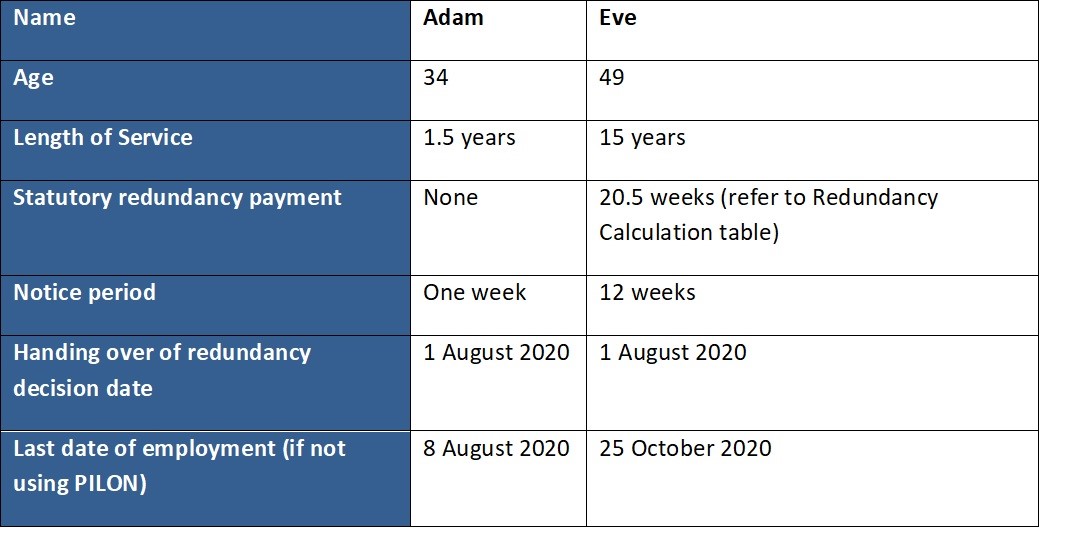If a Company Goes Bust Who Pays Redundancy? Legal Insights for UK Employees
If a Company Goes Bust Who Pays Redundancy? Legal Insights for UK Employees
Blog Article
Unpacking the Techniques for Mitigating Company Redundancy and Enhancing Organizational Resilience
Mitigating business redundancy and enhancing organizational durability have become focal factors for leaders striving to prosper and adjust in an ever-evolving market. As we explore the multifaceted strategies utilized by forward-thinking companies, a much deeper insight emerges right into the aggressive actions crucial for fostering agility and determination in the face of change.
Assessing Current Organizational Redundancies
To effectively examine current organizational redundancies within a business, an extensive evaluation of the existing processes, obligations, and functions is important. if a company goes bust who pays redundancy. By carrying out an extensive assessment of the different features and jobs executed within the organization, management can recognize locations where replication of efforts or inefficiencies exist. This analysis ought to not just concentrate on individual job duties yet also take into consideration how different divisions team up and interact
One strategy to evaluating redundancies is to analyze work descriptions and responsibilities to determine any type of overlaps or voids in responsibilities. Additionally, examining the process and communication channels can disclose traffic jams or unnecessary action in procedures. It is crucial to involve staff members in any way levels during this evaluation to gain understandings from those directly entailed in daily operations.

Implementing Agile Workforce Techniques
Following a detailed assessment of current organizational redundancies, the implementation of nimble workforce techniques ends up being imperative for maximizing operational efficiency and adaptability. One key aspect of implementing agile workforce methods is promoting a culture of continuous learning and growth.
An additional crucial aspect of agile labor force strategies is promoting transparent interaction and empowering employees to make choices autonomously within their duties. On the whole, applying active labor force techniques can help companies stay affordable in today's swiftly developing business landscape.
Leveraging Technology for Effectiveness
Leveraging advanced technical services can dramatically enhance operational efficiency within organizations seeking to improve procedures and maximize source use. By integrating automation devices, expert system, and information analytics, firms can streamline operations, minimize manual mistakes, and make data-driven decisions promptly. Automation can take care of recurring jobs, enabling workers to concentrate on more tactical campaigns, thereby boosting efficiency and advancement.
Furthermore, the execution of cloud computer next page solutions enables seamless cooperation among employee, no matter their physical place. This cultivates communication, improves task administration, and improves general efficiency. Additionally, making use of customer connection administration (CRM) software can assist services much better recognize their customers' needs, individualize communications, and ultimately boost client satisfaction and commitment.

Encouraging Constant Learning and Development
Executing a society of continuous understanding and development is necessary for fostering growth and flexibility within a dynamic organizational i thought about this setting. Motivating workers to participate in recurring knowing possibilities not only enhances their private skills yet also adds to the general strength of the company. By focusing on continuous discovering, organizations can remain abreast of industry trends, adjust to technical improvements, and remain competitive in the marketplace.
To successfully motivate continual discovering and advancement, firms can develop understanding and growth programs, offer possibilities for upskilling and reskilling, offer accessibility to on-line training courses and sources, and produce an encouraging discovering setting. Supervisors play a critical function in promoting a culture of understanding by leading by example, giving comments and training, and acknowledging and rewarding employees' learning success.
Structure a Resilient Corporate Society
Creating a durable corporate society is extremely important for organizations seeking to navigate obstacles and thrive in an ever-evolving company landscape. A resilient company culture is defined by flexibility, openness, open interaction, and a strong feeling of function. To develop such a society, leaders should focus on fostering count on among employees, encouraging cooperation, and advertising a development frame of mind. Transparent communication regarding business modifications, challenges, and successes is crucial in creating a society where workers really feel educated and valued. Furthermore, providing opportunities for specialist development, acknowledging and compensating staff members' payments, and promoting work-life equilibrium are vital components of a durable company society.
Leaders play a considerable function in forming the culture of a company. By leading by instance, demonstrating durability despite difficulty, and actively supporting their groups, leaders can infuse these values throughout the company. A resistant corporate culture not internet only assists business stand up to obstacles however likewise cultivates advancement, improves worker engagement, and ultimately contributes to lasting organizational success.
Final Thought
In conclusion, the methods for reducing firm redundancy and enhancing business strength are essential for preserving competitiveness in today's vibrant service environment. By examining current redundancies, carrying out active labor force methods, leveraging technology, motivating continuous learning and growth, and building a resilient corporate culture, companies can adapt to alter, enhance effectiveness, and foster innovation. These aggressive steps will aid business navigate challenges, lessen interruptions, and make sure long-term success in the ever-evolving industry.
Adhering to a thorough evaluation of existing organizational redundancies, the execution of dexterous labor force strategies ends up being necessary for enhancing operational efficiency and flexibility - if a company goes bust who pays redundancy. On the whole, applying agile workforce methods can help companies stay competitive in today's rapidly developing company landscape
A durable business culture not only assists firms hold up against challenges however additionally fosters innovation, improves employee involvement, and ultimately contributes to lasting organizational success.

Report this page